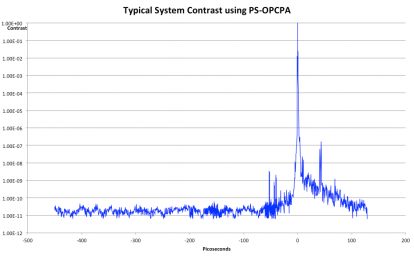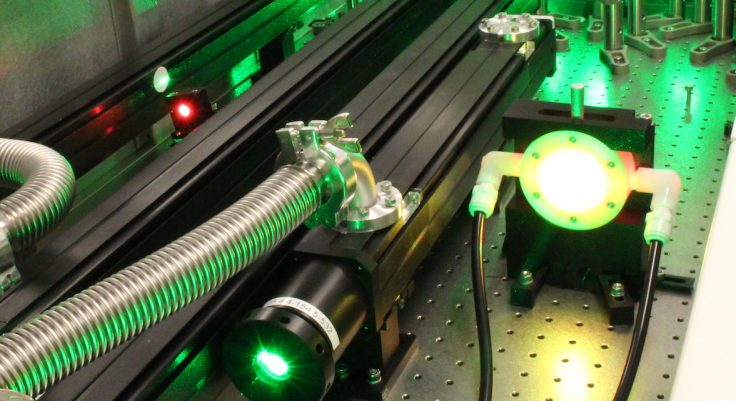July 19, 2017
National Energetics has successfully completed the installation of a 10 Hz, 20 TW laser system at Tel Aviv University in Israel. This system is currently the most powerful laser in the entire Middle East.
The laser uses Picosecond Optical Parametric Chirped Pulse Amplification (PS-OPCPA) for most of the system gain followed by a traditional Ti:Sapphire power amplifier. PS-OPCPA offers significant improvements to current Ti:Sapphire ultrafast laser architectures. This technique amplifies the seed pulse in a picosecond window, enhancing contrast and eliminating prepulses associated with the use of classic regenerative amplifiers.
“The laser is compact, stable and easy to use,” said Dr. Ishay Pomerantz, Principal Investigator at the School of Physics and Astronomy of Tel Aviv University. “We needed a turn-key laser that would allow us to focus on our research into laser-driven particle acceleration rather than dedicate time to align and support a typical high energy laser system. The laser from National Energetics has delivered to our specifications, including a contrast ratio of better than 1010:1 with no measureable prepulses.”

Figure 2: Contrast measurement of the system. The peaks in the 40-60 ps timeframe are artifacts of the measurement technique. They are generated from post pulses created by reflections in the exit window of the compressor.
PS-OPCPA is a key component for next-generation ultra-intense laser systems. With this technique, amplification of a chirped pulse by interactions in nonlinear optical crystals replaces traditional laser amplifiers in at least some of the laser chain. Proper design of the nonlinear optical interaction yields gains of 106 simply by a single pass through a 1-2 cm nonlinear optical crystal.
PS-OPCPA delivers exceptional intrinsic pulse contrast in the temporal range of 10 ns down to 20 ps, as well as improved contrast in the 2 to 20 ps temporal window. It is in this window (2-20 ps), much closer to the laser pulse, which is far more difficult to control and measure. Contrast in this range is largely driven by the creation of post pulses in the laser chain, which nonlinearly mix with the main pulse while they are stretched to produce pre-pulses upon compression. These pre-pulses are only present when the laser operates at full power and cannot, therefore, be measured on the system with only the front end operating.
“Our experience on lasers in our labs is that the use of a regenerative amplifier is a common culprit in producing the post-pulses, which lead to this problem.” says Dr. Todd Ditmire President of National Energetics. “We believe that PS-OPCPA is the best way to construct a CPA laser destined for plasma physics experiments, a belief born from direct experience as experimentalists who have used lasers with and without OPCPA front ends in experiments for many years.”
National Energetics is the leading innovator of high-energy and ultra-intense lasers and laser systems. We provide reliable, high performance solutions utilizing novel technologies that surpass traditional platforms and deliver what you need for your success. These systems include lasers based on Chirped Pulse Amplification (CPA) with peak power from 1 TW to above a PW as well as high energy and high average power pulsed laser systems.
Our CPA lasers feature OPCPA technology as well as more established Ti:Sapphire and Nd:Glass amplification techniques. We offer CPA lasers not only at traditional near-IR wavelengths but also at longer wavelengths out to the mid-IR. National Energetics scientists will also provide consulting services and assistance on the design and construction of high power and high-energy lasers to customers.












